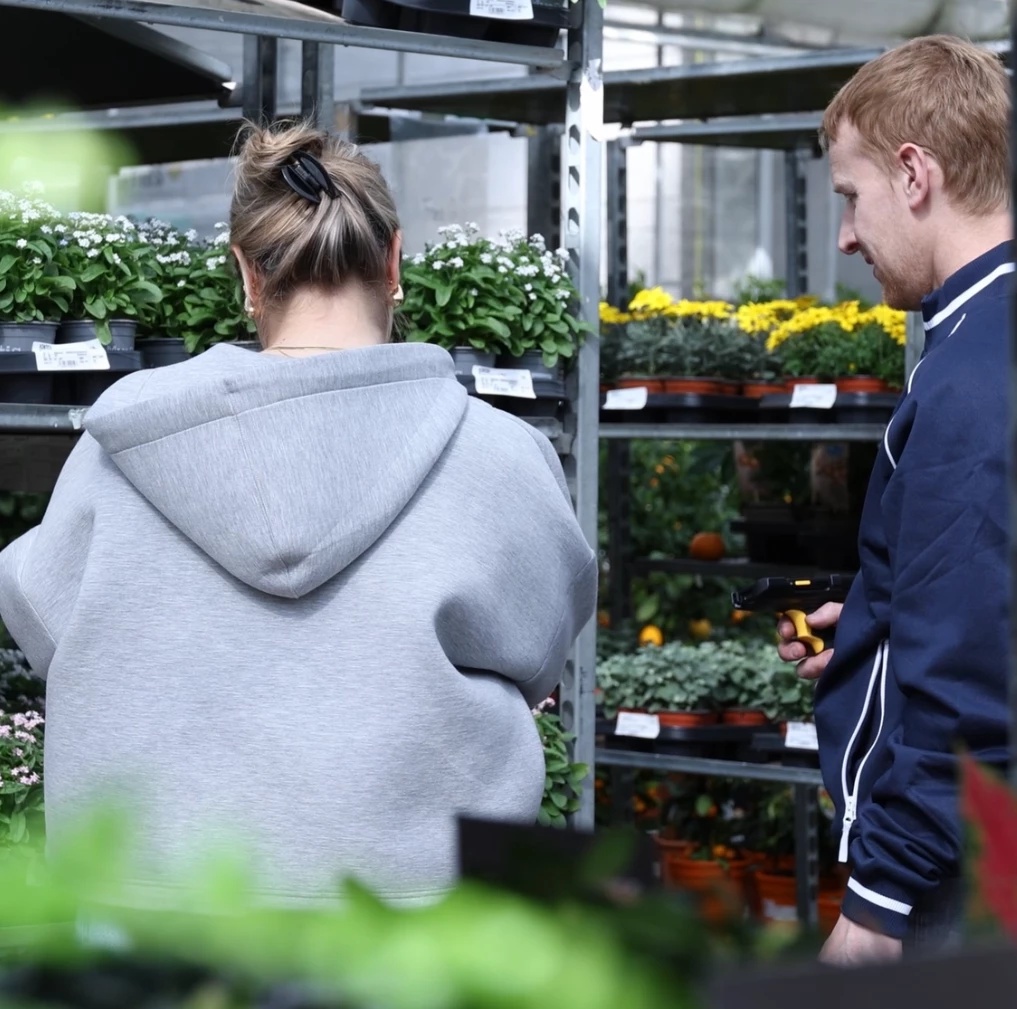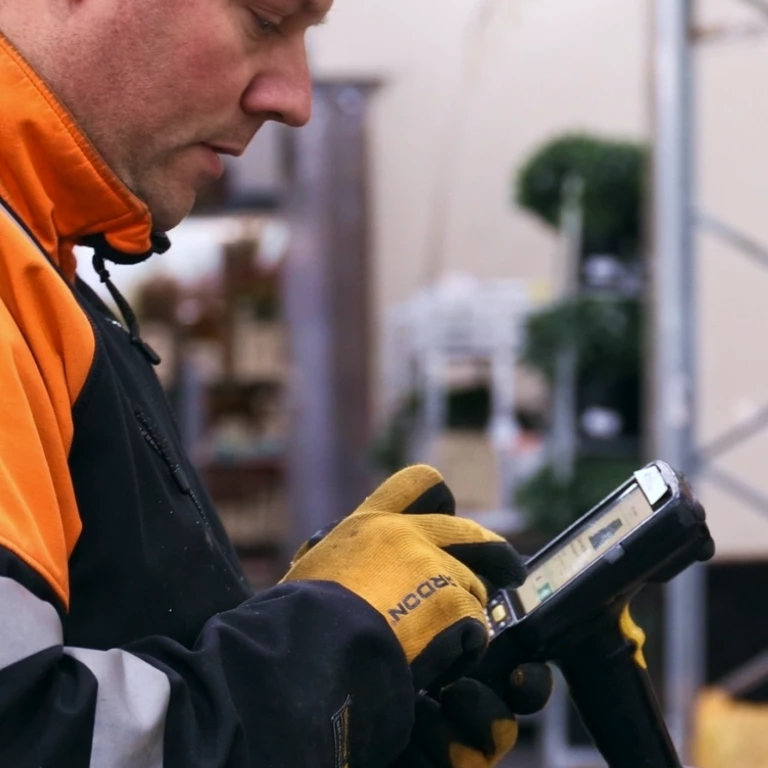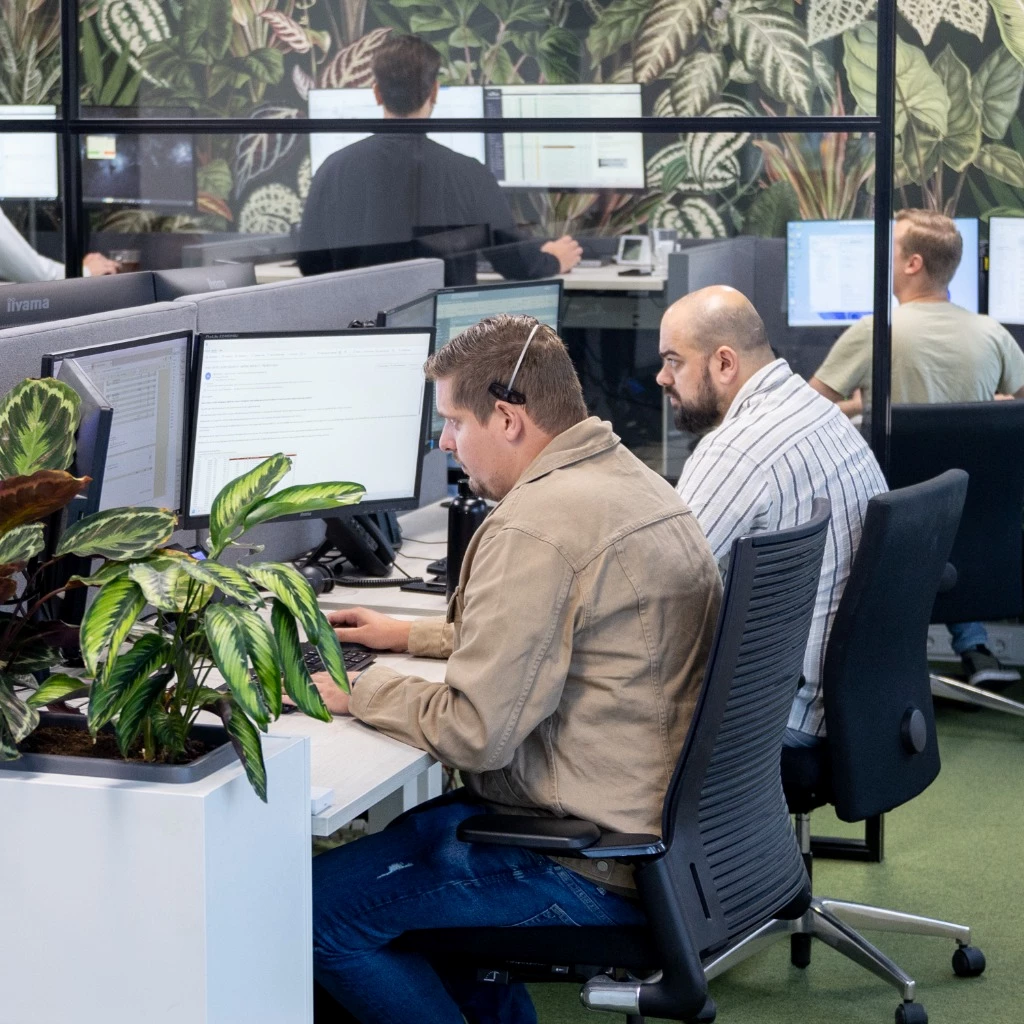Dé 5 fases van onze efficiënte app ontwikkeling
Voor het efficiënt ontwikkelen van onze Apps werken we nauw samen met een selecte groep, geïnteresseerde gebruikers en ons multidisciplinaire ontwikkelteam. Deze gestroomlijnde, gezamenlijke aanpak zorgt voor de ontwikkeling van gebruiksvriendelijke, innovatieve oplossingen, die voor een brede groep van waarde is.
Dé werkwijze
Het gehele ontwikkeltraject bevat meerdere sessies met alle interne stakeholders en een selecte groep, geïnteresseerde gebruikers.
1. Kick-Off
We beginnen met een ‘Kick-off’ sessie, waarin de groep wordt geïnformeerd en we samen met hen, onze developers, designers, consultants en productowner de wensen, behoeften én mogelijkheden bespreken.
2. Domeinmodel
Op basis van de Kick-off wordt het domeinmodel gebouwd. Het bouwen van een domeinmodel houdt in dat we de belangrijkste concepten, objecten en hun onderlinge relaties binnen de applicatie in kaart brengen. Het domeinmodel is een visuele representatie van de gegevensstructuren en logica die de werking van de app bepalen, gebaseerd op de wensen en eisen van de gebruiker. Dit model helpt om een duidelijk overzicht te krijgen van de verschillende onderdelen van de applicatie, zoals entiteiten (bijvoorbeeld gebruikers, producten, bestellingen), hun eigenschappen en hoe ze met elkaar in verband staan. Het domeinmodel dient als fundament voor de verdere ontwikkeling en zorgt ervoor dat de software consistent en goed gestructureerd is.
3. Wireframe & Flowchart
Na de ontwikkeling van het domeinmodel volgt de presentatie van het Wireframe en de Flowchart. Het Wireframe schetst een schematische weergave van de applicatie en users flow van de app. Het is bedoeld om de structuur van de app te visualiseren, zodat het duidelijk is hoe de gebruiker door de app navigeert. De Flowchart is een diagram dat de logica en de stromen van de applicatie uitlegt. Het toont de verschillende stappen of processen die een gebruiker kan doorlopen, zoals het inloggen, het plaatsen van een bestelling of het doorlopen van een formulier. Het geeft een duidelijk overzicht van de beslismomenten en de keuzes die gebruikers kunnen maken, en hoe deze keuzes de werking van de app beïnvloeden.
4. Design prototype
Op basis van de feedback van de gebruikersgroep wordt er een design prototype ontwikkelt. Dit is een interactieve, visuele weergave van de uiteindelijke app, maar zonder dat de volledige functionaliteit is ontwikkeld. Het prototype laat de look-and-feel van de app zien, inclusief de lay-out, kleuren, knoppen, afbeeldingen en typografie, zodat de gebruikers een goed beeld krijgen hoe de app eruit komt te zien en hoe de interactie tussen de verschillende onderdelen plaats zal vinden. Dit helpt om de laatste feedback te verzamelen voor de daadwerkelijke ontwikkeling begint.
5. Technische realisatie
Pas nadat deze stappen zijn doorlopen en goedgekeurd, starten we met de technische realisatie en het programmeren van de app. Dit zorgt ervoor dat we vooraf alles zorgvuldig in kaart brengen, zodat de uiteindelijke ontwikkeling perfect aansluit bij de behoeften van de gebruiker.
Waarom deze aanpak werkt
Door aan de voorkant, dus vóór de technische realisatie, samen te werken met alle stakeholders in co-creatiesessies én regelmatig bij te sturen op basis van klantfeedback, ontwikkelen we apps die naadloos aansluiten op de behoefte van de gebruiker. Het resultaat? Oplossingen die efficiënt, intuïtief, gebruiksvriendelijk en flexibel zijn, zonder onnodige maatwerkoplossingen. Het stelt ons in staat om sneller en effectiever te werken, en tegelijkertijd een beter eindproduct te leveren, die voor een brede groep gebruikers relevant is.

Ruimte voor gepersonaliseerde aanpassingen
Ondanks de vele voordelen van een gestandaardiseerde aanpak, begrijpen we als geen ander dat ieder bedrijf uniek is. Naast onze gestandaardiseerde aanpak, blijft er óók ruimte voor gepersonaliseerde aanpassingen, afgestemd op de specifieke wensen van onze gebruikers. Door deze op de juiste plek te implementeren, zorgen we ervoor dat andere bedrijven hier geen hinder aan ondervinden. Zo kunnen we oplossingen bieden die zowel gestandaardiseerd als flexibel zijn, zonder dat de efficiëntie of de gebruikerservaring in gevaar komt.
Meer informatie?
Wilt u op de hoogte blijven van de laatste app-ontwikkelingen? Via onze kanalen delen we regelmatig updates over de voortgang van onze apps en overige projecten.
Voor meer informatie of overige vragen kunt u contact opnemen met ons kantoor via onderstaande contact button.
Wellicht ook interessant?


